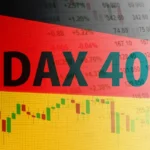The euro traded lower against the US dollar on Wednesday, after a report showed that industrial output in the Euro zone contracted more than initially estimated in September, which implied that economic recovery in the region continued to stall.
EUR/USD slipped to a session low at 1.3409 at 10:45 GMT, after which consolidation followed at 1.3421, losing 0.11% for the day. Support was likely to be received at November 12th low, 1.3359, while resistance was to be encountered at November 12th high, 1.3456.
Earlier today it became clear that industrial production in the common currency zone decreased 0.5% in the month of September compared to August, which exceeded preliminary estimates, pointing a lesser drop, 0.3%. Septembers result partially neutralized the 1.0% advance, registered in August, and also suggested that economic growth in the region probably slowed down during the third quarter of the year, after in Q2 economy exited the 18-month recessionary period. Annually, industrial production climbed 1.1% in September, following the revised up drop of 1.1% in August from a 2.1% drop previously.
The Gross Domestic Product in the Euro bloc probably expanded 0.1% during the third quarter, after a 0.3% gain in the previous quarter, according to a survey of experts. The official figure is scheduled for release tomorrow.
“The euro is a sell on rallies,” said Alvin Tan, a director of foreign-exchange strategy at Societe General SA in London, cited by Bloomberg. “We don’t think the recovery in the euro-area is particularly strong and expect the GDP data tomorrow to show growth momentum is definitely slackening. That will put downside pressure on the euro.”
Meanwhile, the euro was losing ground against the sterling, as EUR/GBP cross dropped 0.54% on a daily basis to trade at 0.8403 at 12:40 GMT. Bank of England (BoE), in its report on inflation released today, said that unemployment rate in the United Kingdom was more likely than not to reach 7% during the third quarter of 2015. The bank had previously projected that such level would be reached in 2016. Stronger prospects for domestic demand and accelerating recovery have been cited as major factors to facilitate the faster-than-initially-expected decrease in unemployment. BoE policymakers also revised down the short-term forecasts regarding the rate of inflation. They now project that the consumer price index in the country will slow down to just below the central bank’s 2% objective by the first quarter of 2015. Following the release of this report, GBP/USD cross extended earlier gains and reached a new daily high at 1.6002 at 10:40 GMT.
Earlier in the day, the International Labour Organization (ILO) reported that the rate of unemployment in the United Kingdom dropped to 7.6% during the three months through September this year, compared to the same period in 2012, marking the lowest level since the three months through August 2009.
In addition, EUR/JPY pair was down 0.28% to trade at 133.50 at 12:41 GMT. The euro has gained 6.4% during this year, or the best performing currency among the 10 developed-nation currencies, which are tracked by Bloomberg Correlation-Weighted Indexes. The US dollar has appreciated 4.4%, while the Japanese yen has plunged 10% during the same period.





